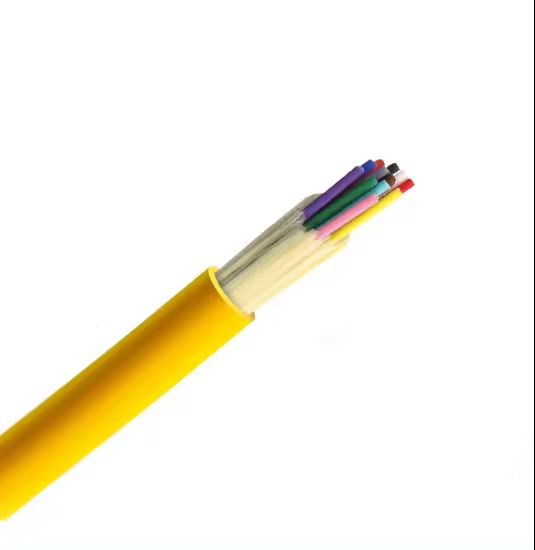Fiber optic technology has revolutionized data transmission, providing unmatched speed and capacity compared to traditional copper cables. A crucial but often overlooked component of fiber optic networks is the jacket surrounding the delicate optical fibers. The jacket not only guards against physical damage but also influences the cable’s flexibility, installation method, and suitability for different environmental conditions. Jackets can vary in material composition, thickness, and structural design, each tailored for specific use cases such as indoor routing, outdoor exposure, or even direct burial.
The design of fiber optic cable jackets is influenced by the mode of fiber they protect: single-mode or multi-mode. Single-mode fibers are used for long-distance communication as they allow the light to travel straight down the fiber without much reflection, thus reducing data loss over distances. Multi-mode fibers, however, are optimized for shorter distances, commonly used within buildings or across small campuses, where light bounces more inside the core, allowing for data to be transmitted at higher rates.
Different environments and applications require different types of cable jackets. For instance, cables used underground or in outdoor settings might need enhanced moisture resistance and physical protection against environmental hazards, while those used inside buildings might need to be more flexible and easier to handle during installation.
In the sections that follow, we will explore eight specific types of fiber optic cable jackets: Armored Tight Buffered, Flat Drop, Loose Tube, Micro-Distribution, Mini-Armored Tight Buffered, Tactical, Tight Buffered, and Zip Cord. Each of these jacket types offers unique features and benefits, making them suitable for various applications across both single-mode and multi-mode fibers. This discussion will include detailed descriptions of each type, their typical applications, and a comparative chart to visually summarize where and why each type is used.
Types of Fiber Optic Cable Jackets
- Armored Tight Buffered
- Flat Drop
- Loose Tube
- Micro-Distribution
- Mini-Armored Tight Buffered
- Tactical
- Tight Buffered
- Zip Cord
1. Armored Tight Buffered
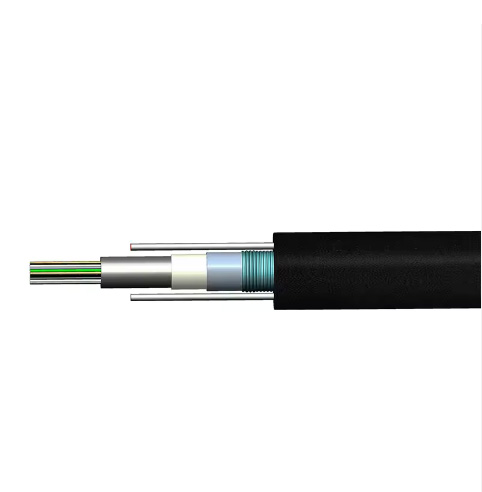
Application: Typically used in environments that require cables to be protected from physical damage. These cables are designed with a metal armor that protects the fiber from mechanical stresses like crushing, rodents, and other potential hazards. They are ideal for industrial settings, data centers, or any areas where cables may be exposed to potential physical harm.
Fiber Type: Suitable for both single-mode and multi-mode fibers.
2. Flat Drop
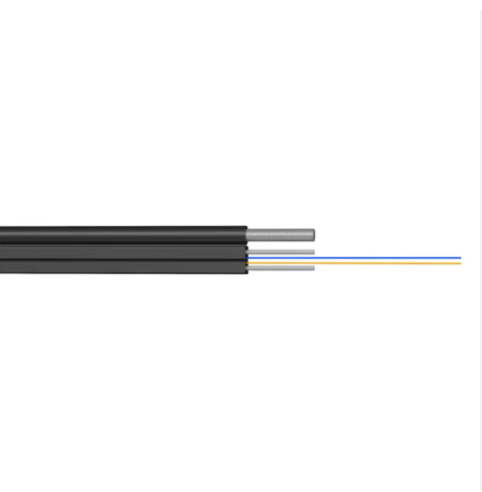
Application: Primarily used in fiber to the home (FTTH) installations. Flat drop cables are designed for external use to connect individual buildings. They are lightweight and often feature an easy-to-install design that is optimized for aesthetic considerations and minimal space usage.
Fiber Type: Commonly used with single-mode fibers due to the typical long-distance requirements of FTTH applications.
3. Loose Tube
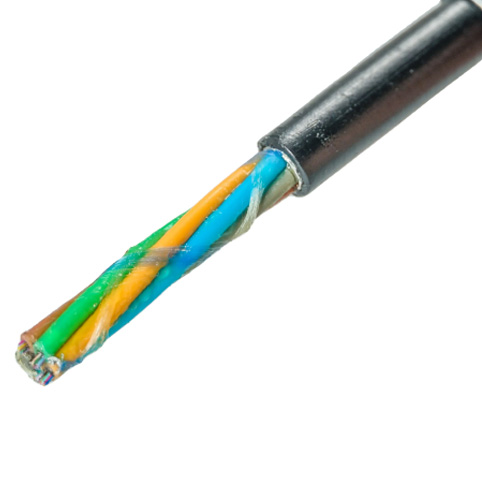
Application: Best suited for outdoor applications and direct burial. The loose tube design allows the fibers within to move freely, which provides excellent protection against environmental conditions like temperature fluctuations and physical stress. These cables are typically filled with a gel that helps protect the fibers from moisture.
Fiber Type: Can be used with both single-mode and multi-mode fibers, but more common in single-mode long haul telecommunication networks.
4. Micro-Distribution
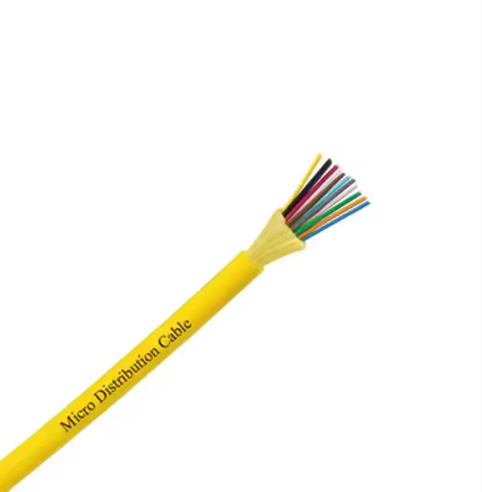
Application: Ideal for high-density applications in data centers or server rooms. These cables are designed to be highly flexible and are often used in backbone, horizontal, and patch cabling applications. They can be easily terminated with standard connectors, making them highly versatile.
Fiber Type: Suitable for both single-mode and multi-mode fibers.
5. Mini-Armored Tight Buffered
Application: Provides enhanced protection against physical damage compared to standard tight buffered cables but with less bulk and weight than full armored options. These are used in environments that need additional protection but where space and flexibility are also concerns.
Fiber Type: Works with both single-mode and multi-mode fibers.
6. Tactical
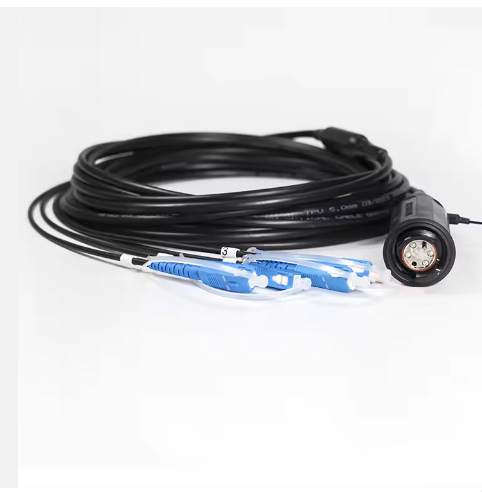
Application: Designed for temporary deployments where cables need to be deployed and retrieved quickly, such as in broadcasting or military applications. Tactical cables are highly durable, resistant to all kinds of environmental hazards, and are designed for easy handling and multiple deployments.
Fiber Type: Typically used with single-mode fibers for high-quality data transmission.
7. Tight Buffered
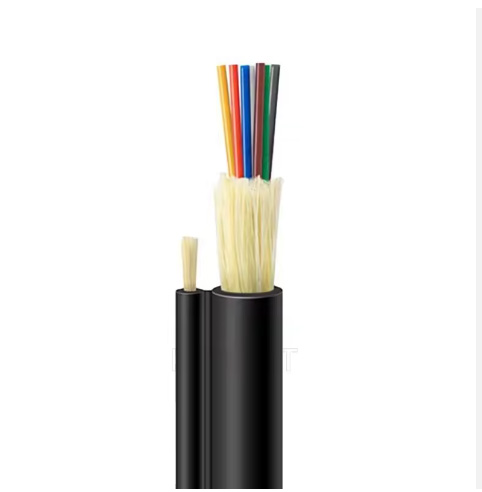
Application: Commonly used for indoor applications, particularly where cables are routed without ducts or trays. These cables are easier to handle and install, as the buffering provides a robust and convenient platform for quick termination of fibers.
Fiber Type: Primarily used with multi-mode fibers in building networks, data centers, and other indoor environments.
8. Zip Cord
Application: Typically used in patch cords and desktop connections. Zip cords allow for easy and quick installation due to their simple, pull-apart design. They are not suited for high-stress environments but are ideal for office networking.
Fiber Type: Suitable for both single-mode and multi-mode fibers, particularly in short-distance applications.
Comparison Chart
To further aid understanding, here is a chart that outlines the key characteristics and applications of each cable type:
| Cable Type | Fiber Type Used | Primary Application | Environmental Suitability |
|---|---|---|---|
| Armored Tight Buffered | Both | Industrial, Data Centers | High physical protection |
| Flat Drop | Single-mode | FTTH | Outdoor, Aesthetic |
| Loose Tube | Both | Outdoor, Long-haul | High moisture resistance |
| Micro-Distribution | Both | Data Centers, Server Rooms | Indoor, High-density |
| Mini-Armored Tight Buffered | Both | Industrial Light | Physical protection |
| Tactical | Single-mode | Broadcasting, Military | High durability |
| Tight Buffered | Multi-mode | Indoor Networking | Easy handling |
| Zip Cord | Both | Desktop Connections | Low stress environments |
This chart should provide a quick reference to understand the typical uses and environments suitable for each type of fiber optic cable jacket. Each type is designed to meet specific requirements in the vast and diverse field of fiber optics, ensuring that whether for robust industrial applications or for precision data



